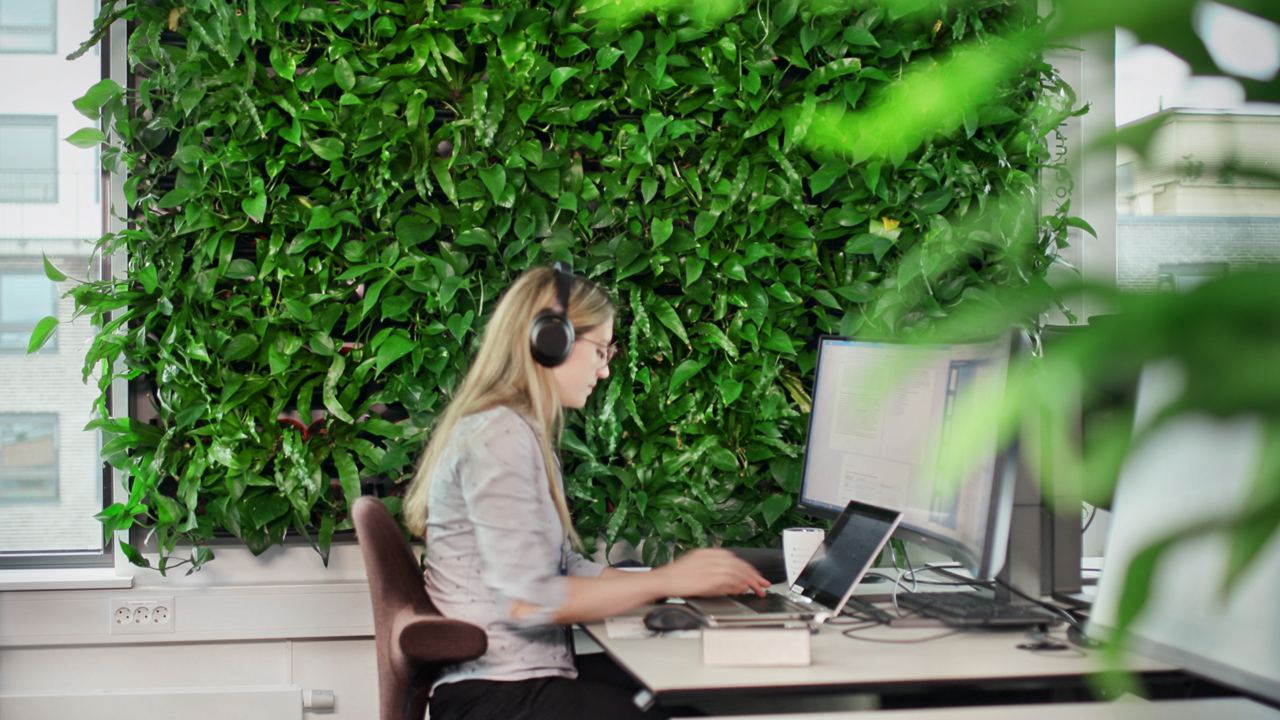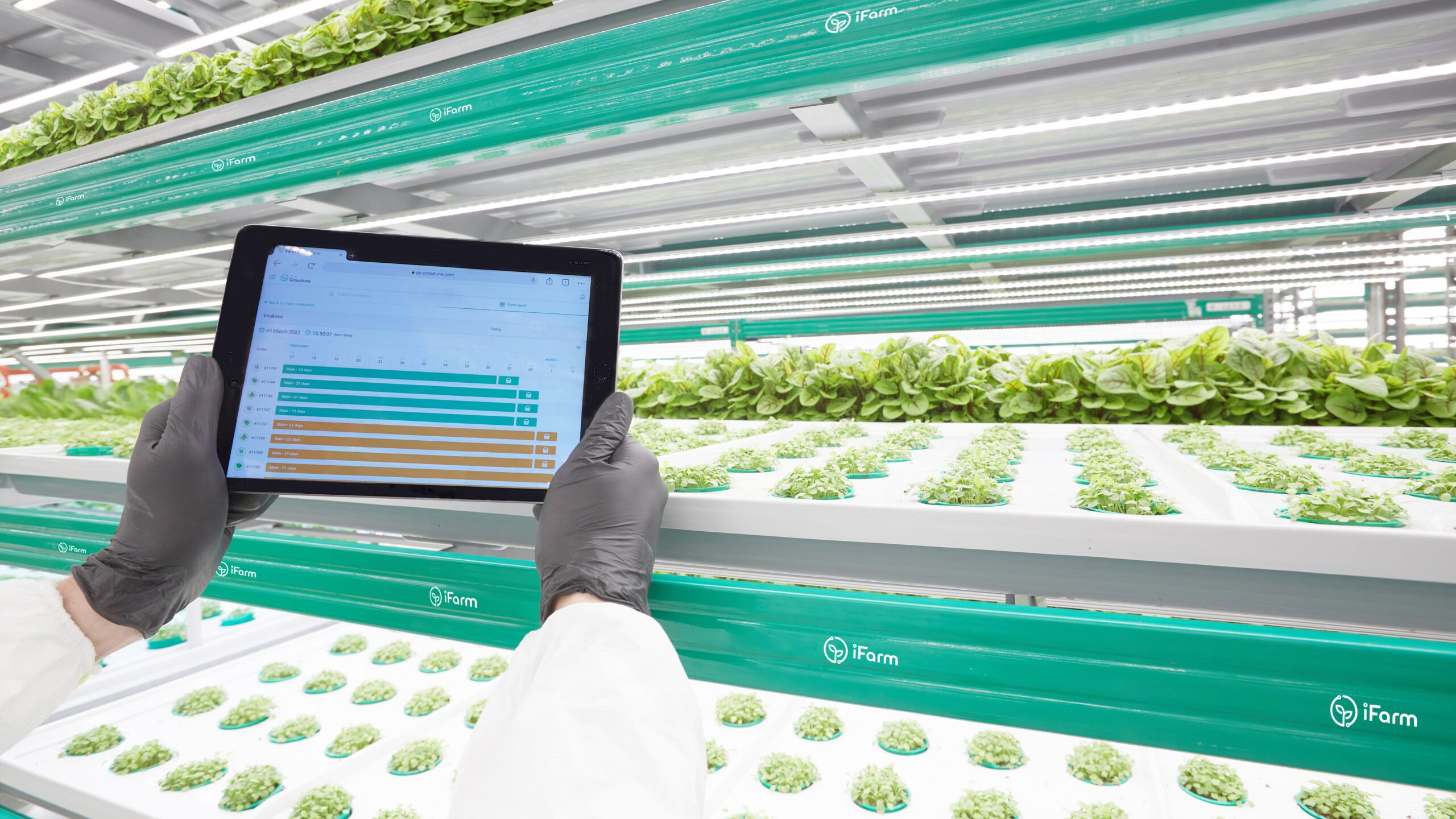
About Skogluft
- Founders: Jørn Viumdal
- Founded in: 2018
- Employees: 5
- Money raised: -
- Ultimate goal: Reconnecting people with nature
The vast majority of Dutch people (83%) would like to spend more time in nature. But in practice, this is easier said than done. With the plant wall and special lamp from the Norwegian start-up Skogluft, you no longer have to miss nature, sufficient daylight, and clean air in your daily life. In this episode of Start-up of the day, Kat Novotna, spokesperson for Skogluft Netherlands and Head of Skogluft Academy, and Lisalotte van Os, Skogluft’s Dutch PR partner from PRLab, talk about how the start-up is doing.
What problem are you solving?
“Research shows that nature has a positive impact on people. Both physically and mentally. Yet on average, we spend 90% of our time indoors, at work, and with the family at home. When you bring nature inside, it brings positive changes. Blood pressure and cholesterol levels drop and people feel more relaxed. They suffer less from panic attacks and stress. We base our findings on the results of 10 years of scientific research conducted by the Norwegian University of Life Sciences.”
What does your product look like?
“We offer a holistic package. The plants themselves of course, which are in our bins. Our bins are produced in a sustainable way and can eventually be recycled again. In addition, we offer a special Skogluft lamp, which makes the color of the leaves stand out even more. This gives people an even more pleasant feeling when looking at the plant wall. In many countries, customers can order the plants from a local plant store so they don’t have to be imported from Norway.”
“Currently we are also in the process of launching our app. Through the app, users can get tips on how to take care of the plants. They can also get in touch with each other this way. In this way, a community is created.”
What plant do you use?
“The dragon ivy. We chose this plant because of its special properties. It is a powerful plant that requires little maintenance, i.e. light and water. It also does well in a dark bathroom. In addition, ivy is very active in cleaning the air. You can also put many of these plants together in a container. A module consists of four containers and a total of sixteen plants. By the way, you cannot see the containers themselves. The modules are designed in a minimalist style. When you look at the wall you only see the plants.”

Who is your product intended for?
“For companies in office buildings, for example. Among others, Coop and Google Norway use the Skogluft plant wall. But the module can also be hung nicely on the wall of your home office. In addition, our product works well in classrooms. By having greenery on the wall, children and students become more focused and can remember the learning material better. Studies have also been done on the effect of nature within hospital walls. It turns out that patients actually recover faster after surgery when there are more plants in the hospital room.”
What is innovative about your product?
“That it is so simple and user-friendly. The system hangs on the wall within eight minutes and otherwise requires little maintenance. The plant is very robust. Watering it once every three weeks is sufficient.”
You recently decided to enter the Dutch market. Why the Netherlands?
“In the Netherlands, sustainability is high on the priority list. We noticed that there is a lot of interest from society for this type of product. Moreover, the Netherlands is a densely populated country, which means that nature is not within walking distance for everyone. The need for greenery in the office or home is therefore great.”
Are you going to expand further into other countries?
“We also have plans to expand to the United States. That comes with new challenges. For example, you need certain insurances to export the plants to America. And there are other things we need to figure out. But eventually, the goal is to deliver all over the world.”
Will you eventually add more products to the range?
“Among other things, we are looking into bringing the food forest inside. People often have vegetable garden plants in their homes now, such as tomatoes and basil. We are looking into whether it is possible to select plants that can be put together in a container. In addition, of course, it has to look nice. It has to become a kind of work of art.”


